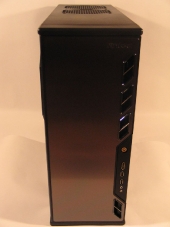 |
The front of the case features a surface that is both matte and reflective, which is a neat trick. The parallelogram-shaped holes along the right side are partially there for style, partially to improve airflow when the front door is closed. They also allow the HDD activity LED to be seen when the door is closed, which corrects one of the quirks of earlier P-series cases. The front door itself swings a full 270 degrees, and holds itself against the side panel with a hidden magnet, which is nice for those times when you need access to the drives. The cluster in the lower right contains the system power LED, a lock for the front door, one eSATA port, two USB 2.0 ports, and front microphone and headphone ports. |
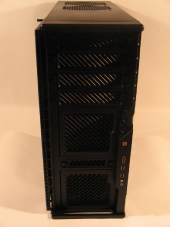 |
Opening the front door, we see one of the big improvements over older P-series cases, the front grilles. Older cases such as the P180 had fairly restrictive grilles on the front intake fans, which caused turbulence problems. This time, Antec has ditched those old grilles in favor of a more open design that also incorporates dust filtration. The drive bay covers for the four 5.25″ and one external 3.5″ drive bays also feature this dust-filter design, which aids greatly in keeping the inside of the case free of dust, pet fur, and other debris. |
 |
With the dust filters removed, we can see the intake grilles on the chassis itself, which are made up of large, square holes in the steel frame. A honeycomb pattern would arguably be more ideal, but this layout is anything but restrictive. The dust covers on the empty drive bays pop off by simply squeezing the latches to either side and pulling, while the doors over the two intake fan slots will pop onto and off of their hinges with just a thumbnail’s pressure near the post. Grab a can of compressed air or a powerful vacuum, and you can get rid of the accumulated dust in just a few minutes. |
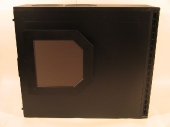 |
The left-hand side of the case is blank, except for the large module towards the rear that houses the 200mm fan. Antec chose to mount the fan on the exterior of the panel purposefully, in order to accommodate the larger tower-style heatsinks that are often used in quiet or silent systems. The rear of the fan module has a slot for a large dust filter that slides into place over the fan, again to help keep dust out of the system. |
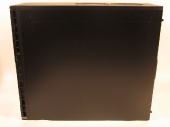 |
The right-hand side of the case is completely blank, which is not unusual. There is a slightly raised portion in the middle, but close inspection with eyes and possibly fingers is required to detect this. Not pictured here are a quartet of silicone feet on the bottom of the case, which help to dampen any vibration that might be transmitted from the floor.
|
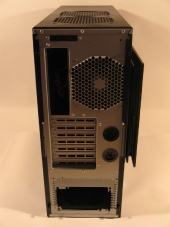 |
The rear of the case is a fairly standard affair in most respects. Each of the side panels is held in place with a pair of thumbscrews, and has a raised lip in the middle for pulling it open. The P193 does not come with its own I/O backplate for the motherboard, but given that the majority of motherboards come with their own, this is not a problem for most. Directly beside the I/O backplate is the grille for the case’s one rear 120mm exhaust fan, which is shaped in a repeating honeycomb-pattern for maximum airflow. At the very top, we see a small plastic panel with three 3-position switches. These switches control the speed of the two top and one rear exhaust fans.Below these, we see the motherboard expansion slots and a pair of circular holes, about 1″ in diameter, fitted with rubber grommets. These allow for easy use of an external pump and radiator, if watercooling is your thing.The PSU bracket deserves special mention, as it is somewhat unusual. The bracket in the case itself is much larger than is called for in the ATX specification, with a metal shim screwed into place with the more usual bracket. This is to accommodate the Antec CP-850, a power supply made especially for the Performance One series of cases. Hit the link for a more in-depth look at this power supply. |






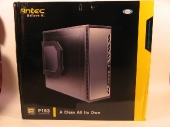
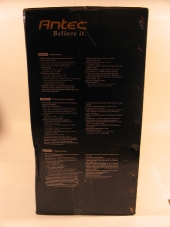
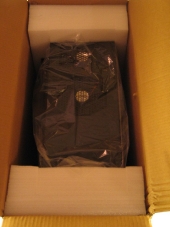

[…] gets into the Antec P193 Computer Case/Chassis, the NZXT Zero 2 Computer Chassis/Case and the Azza Solano Computer […]
[…] TechwareLabs looks at the Antec P193 Computer Case […]